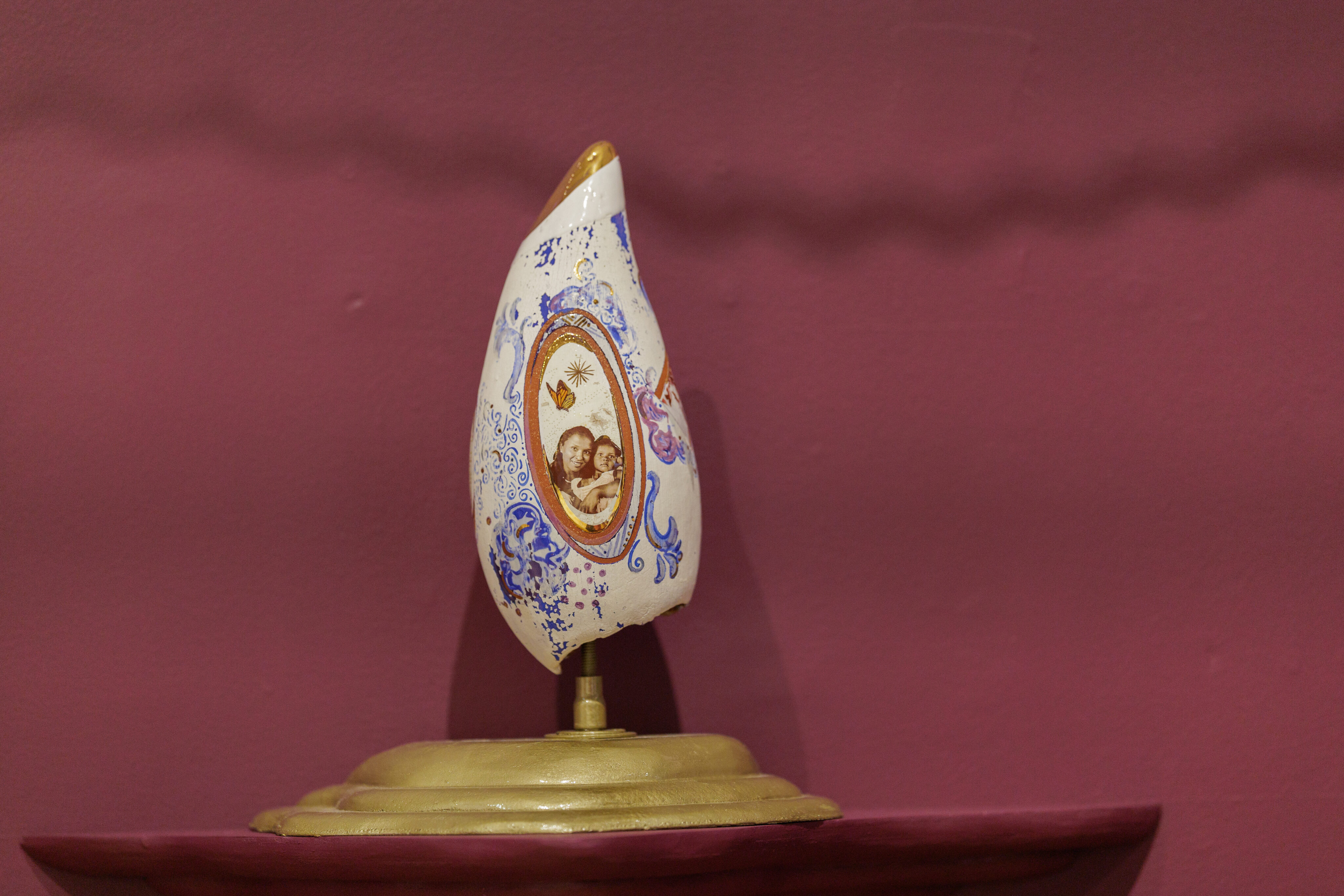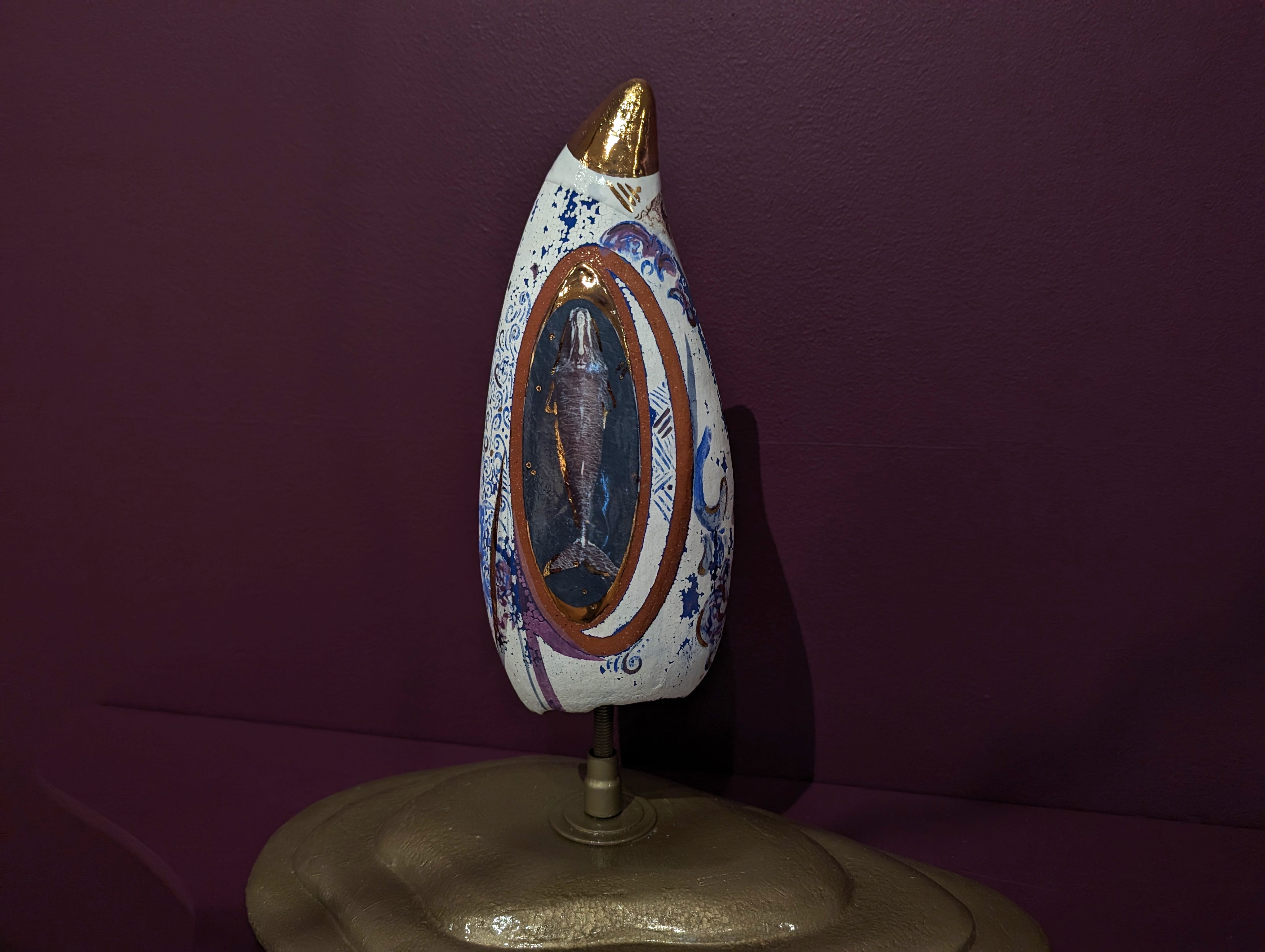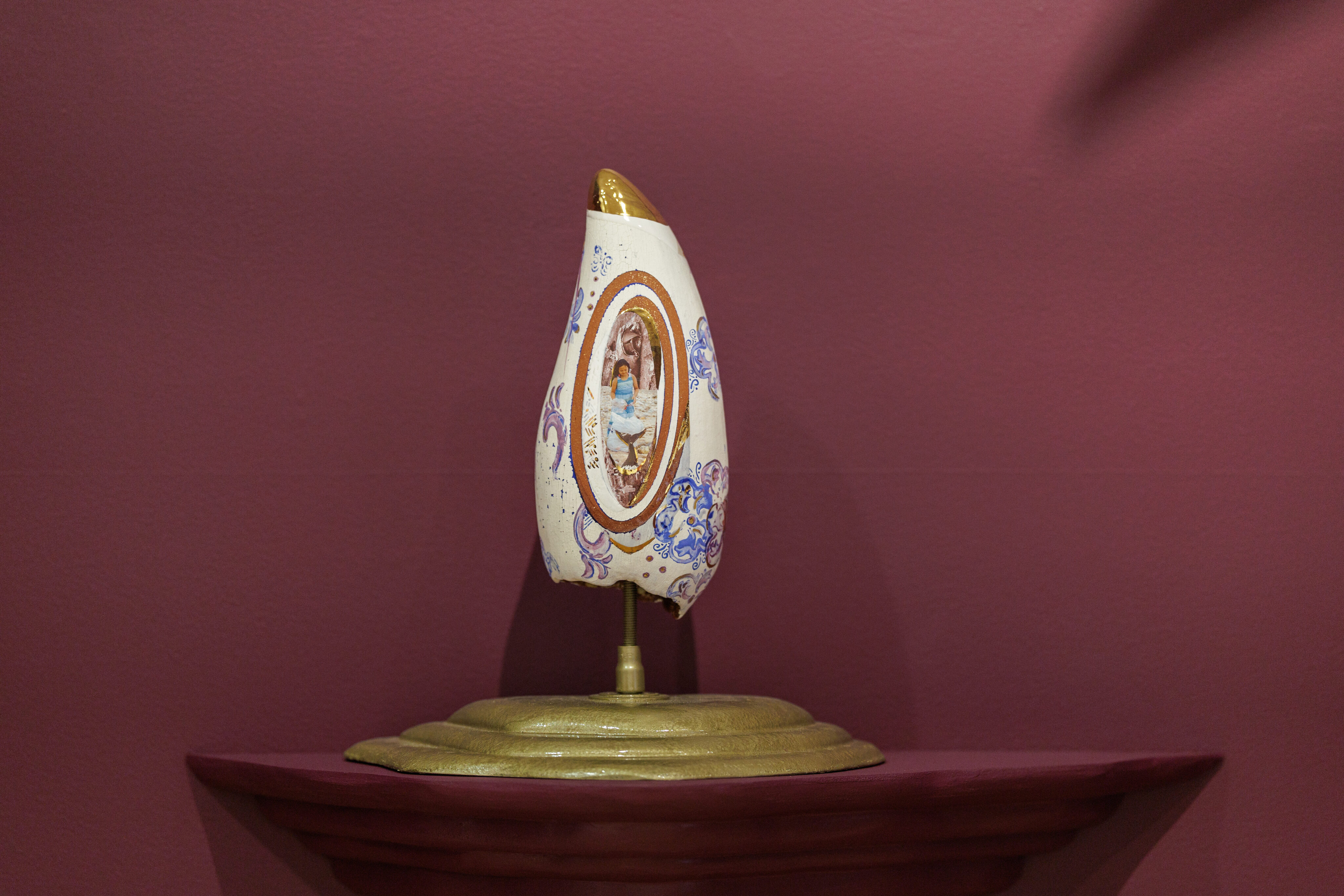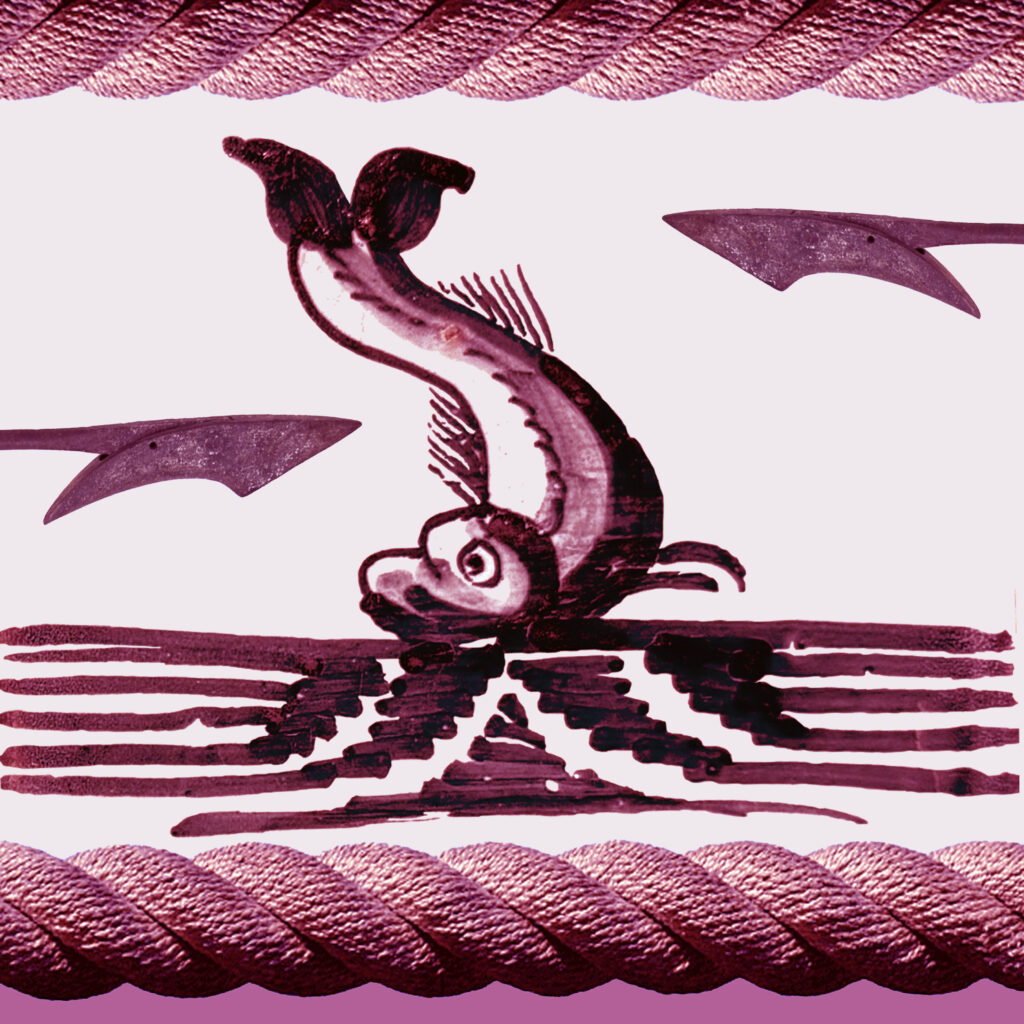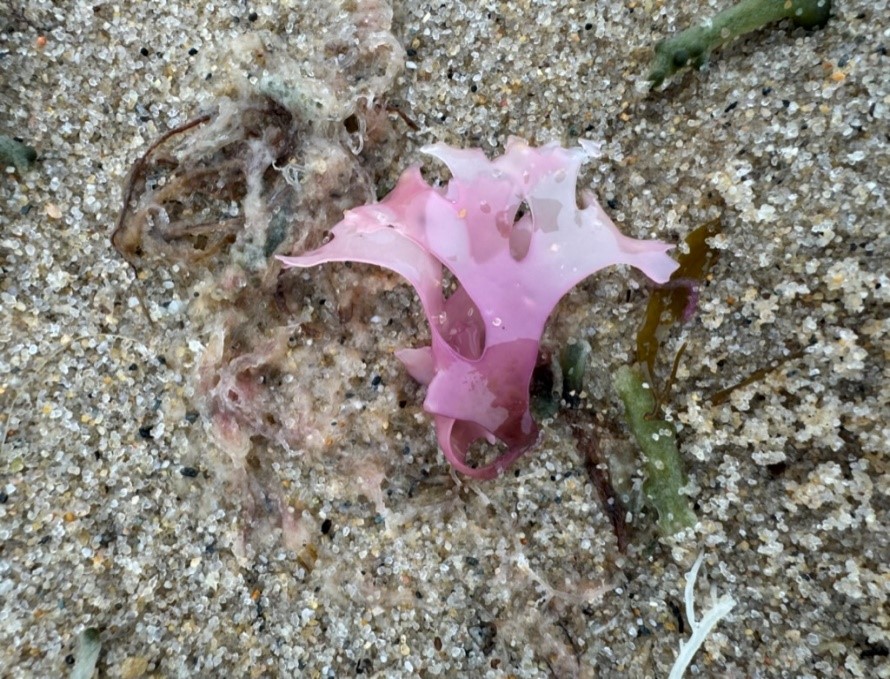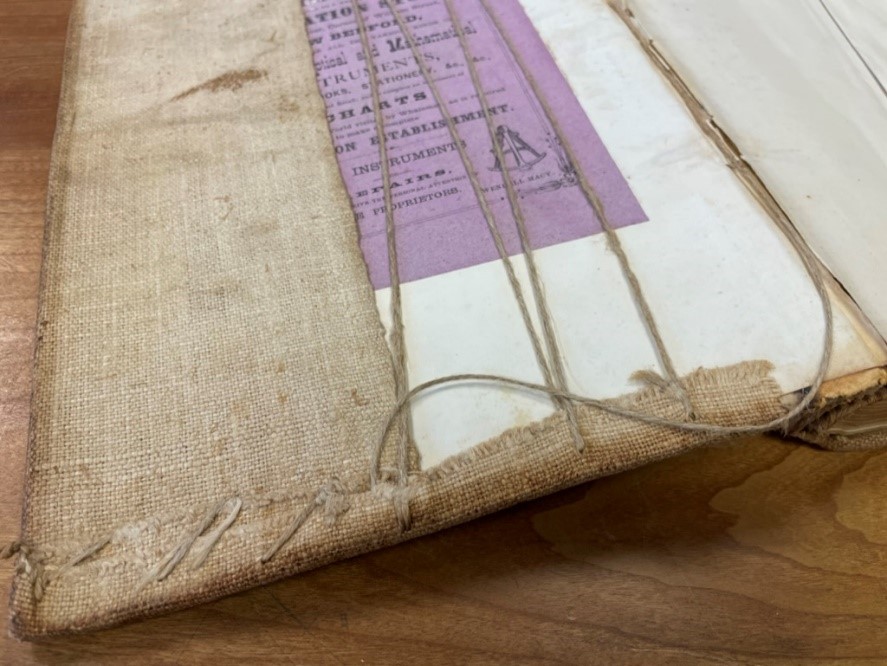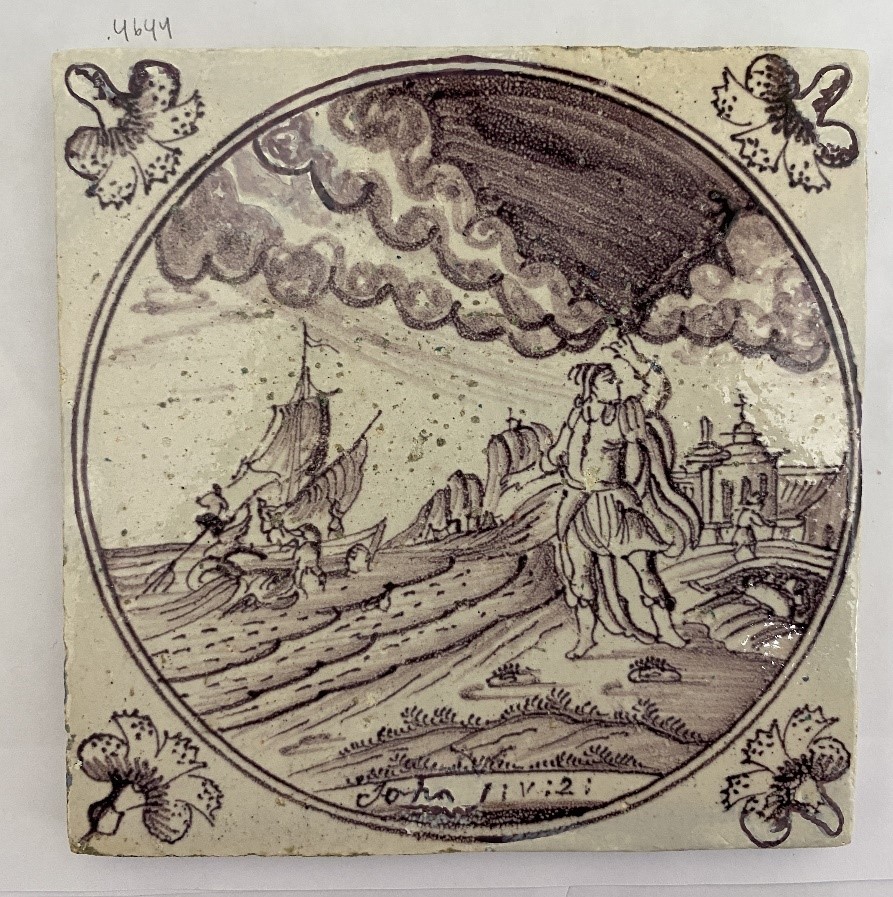BREACH: LOGBOOK 24 | SCRIMSHAW
New Bedford Whaling Museum
Center Street Gallery
June 14, 2024 - November 3, 2024
Explore Museum Objects
scrim·shaw| ˈskrimˌSHô |
verb [with object]
adorn (whalebone, ivory, shells, or other materials) with carved or colored designs:
(as adjective scrimshawed): the scrimshawed jewelry and antique furniture on sale.
noun
scrimshawed ivory or shells: a collection of scrimshaw.
Shinnecock artist Courtney M. Leonard’s BREACH project investigates the multiple meanings of the word Breach in relation to water, whales, and Indigenous sovereignty. Woven into her work is the study of coastal communities' relationship to water and how this connection to a place is changed or altered with eroding coastlines and environmental degradation due to extraction and pollution.
Organized as visual logbooks from whaling ships, each installation connects to the community in which it lives. Logbook 24| SCRIMSHAW, reflects on the New Bedford Whaling Museum’s collection, which includes scrimshaw, logbooks and journals from whaling ships, harpoons, and parts of whale bodies and other marine mammals. Leonard places items from the collection— including a logbook from the Bark Callao (1871-1875 voyage), a whaling ship mastered and manned by Shinnecock whalers, in conversation with her personal and ancestral relationship to water and whaling.
Leonard situates this conversation within the context of understanding and acknowledging the Mashpee Wampanoag connection to place. Examining these connections, Leonard asks the question “Can a culture sustain itself when it no longer has access to the material that fashions that culture?”
Epiphyseal Disc and Plate
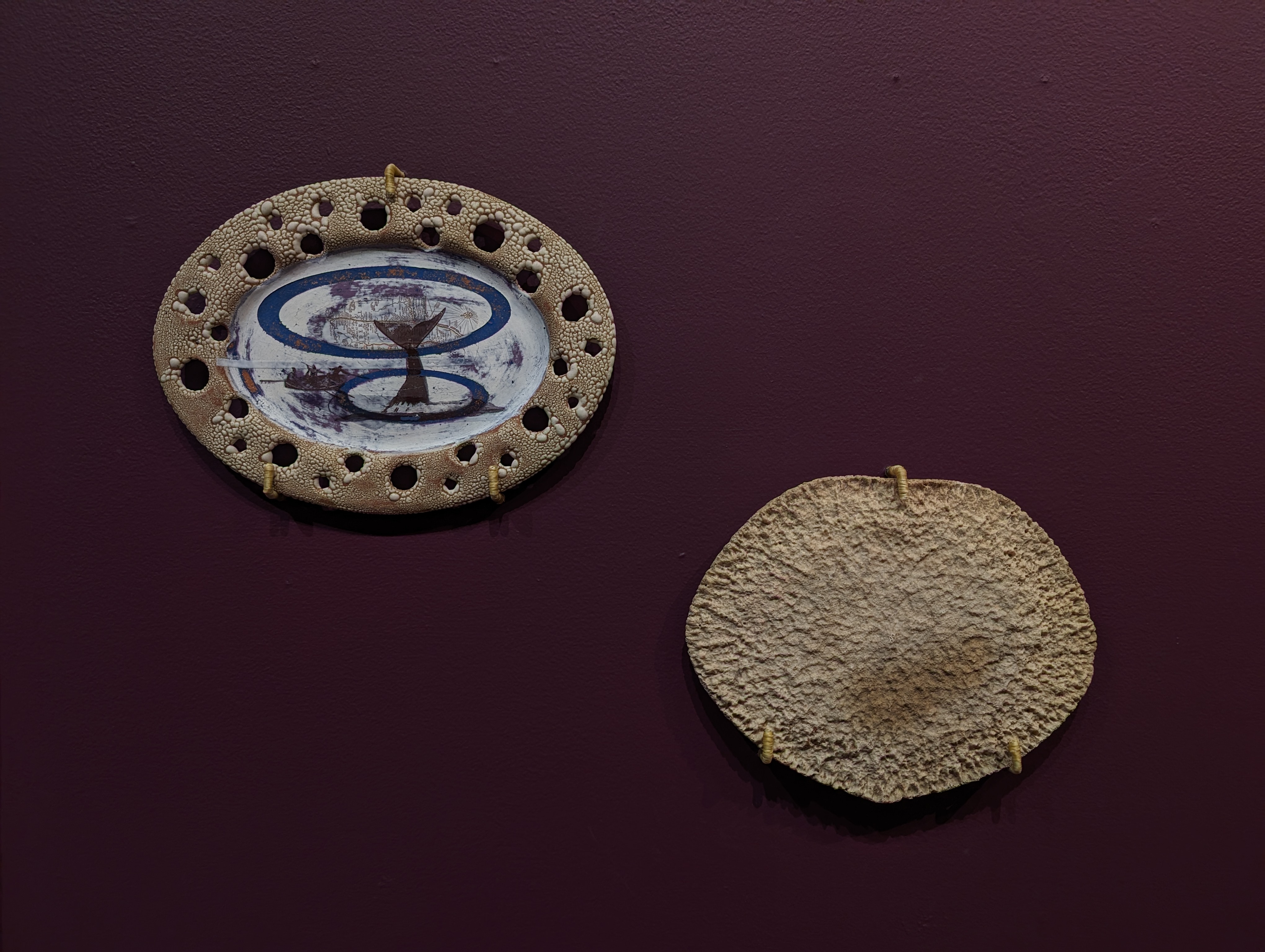
BREACH: Logbook 24 | SUBSISTENCE STUDY, 2024 Collection of the artist Epiphyseal discs from juvenile blue whale, 1998, New England Marine Mammals, 1998.11
The epiphyseal discs are from KOBO, a juvenile blue whale struck and killed by a 486-foot tanker and brought ashore in Rhode Island in March of 1998. This ceramic plate evokes the color and texture of the vertebral disc from KOBO.. Layered with imagery of Indigenous whalers and whales, and surrounded by an almost porous rim that appears to be eroded, the work speaks to the coastal erosion changing the environment in coastal Indigenous communities.
Scrimshaw Studies
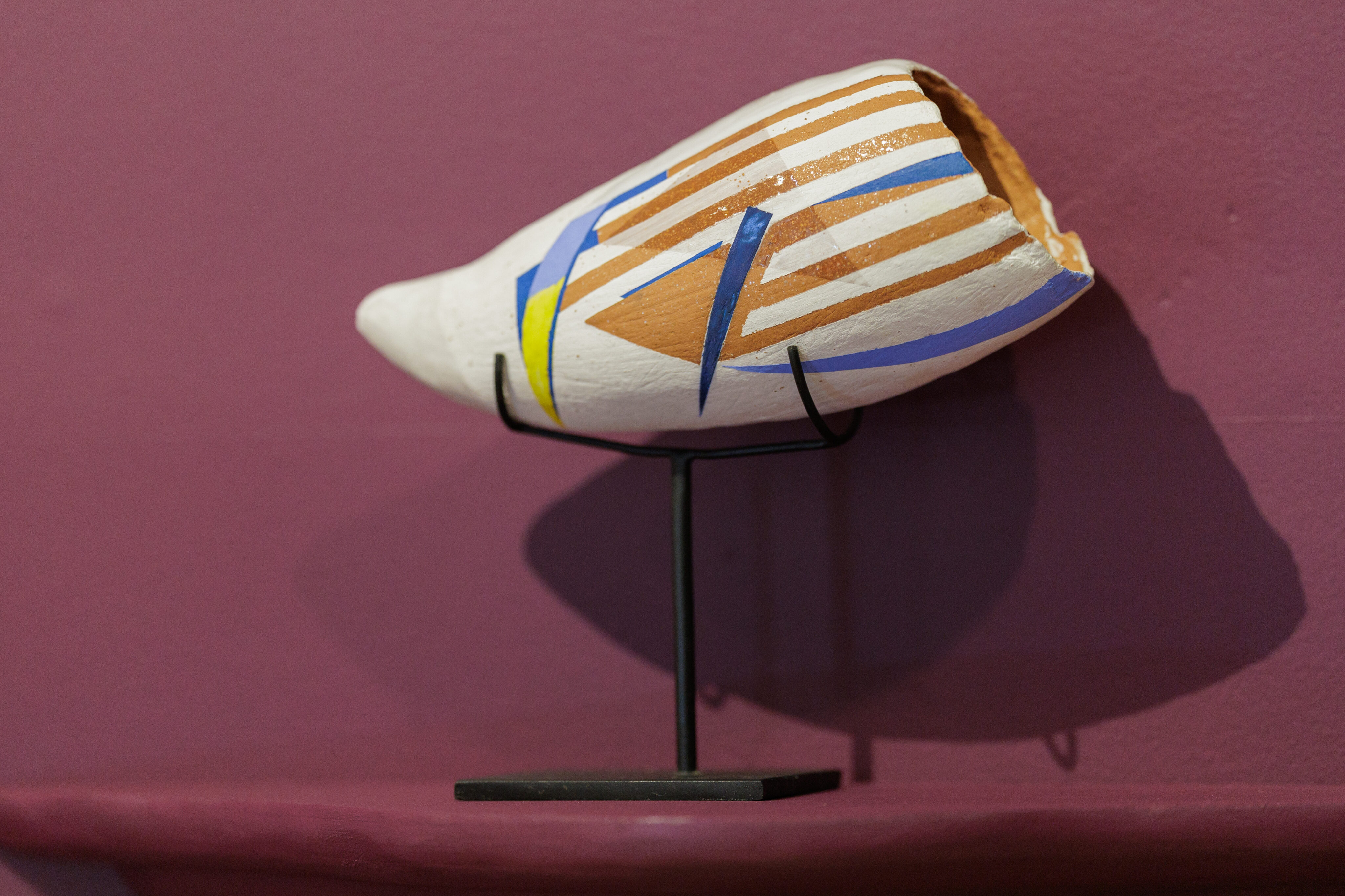
BREACH: Logbook 15 | SCRIMSHAW STUDY, 2015
Ceramic (coiled micaceous clay, glaze)
The first in the SCRIMSHAW study series, this ceramic form coiled to look like a sperm whale tooth includes imagery that relates to ship sails and the Shinnecock hills. The parallel lines are similar to markings found on Eastern Algonquian pots.
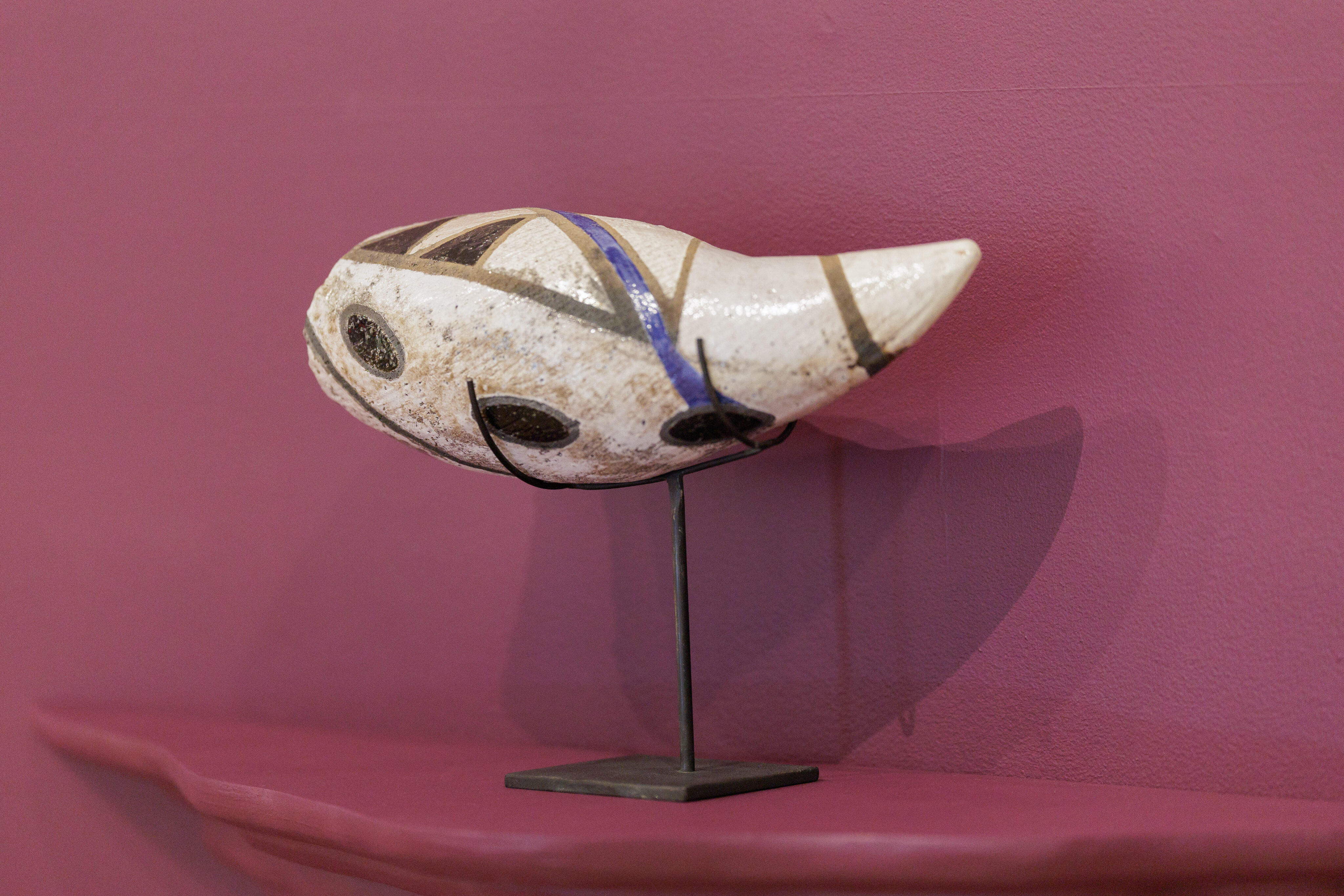
BREACH: Logbook 16 | UTQIAGVIK
WHALE COUNT STUDY # 2, 2016-2020
Ceramic (carbon reduction fired glaze stoneware)
In 2016 Leonard visited Utqiagvik (Barrow, Alaska) to observe an Iñupiat whale count. The oval shapes represent the whale pods breaching the water.
BREACH: Logbook 24 | SCRIMSHAW STUDY #2, #1, #3, 2024
Ceramic (coiled micaceous clay) and 22kt gold luster glaze
Collection of the artist
These three SCRIMSHAW studies include transferware imagery related to Leonard’s family, ancestral ties to the whaling vessel the Bark Callao, and North Atlantic right whales.
Harpoons (Toggle Iron for Darting guns), mid-1800s
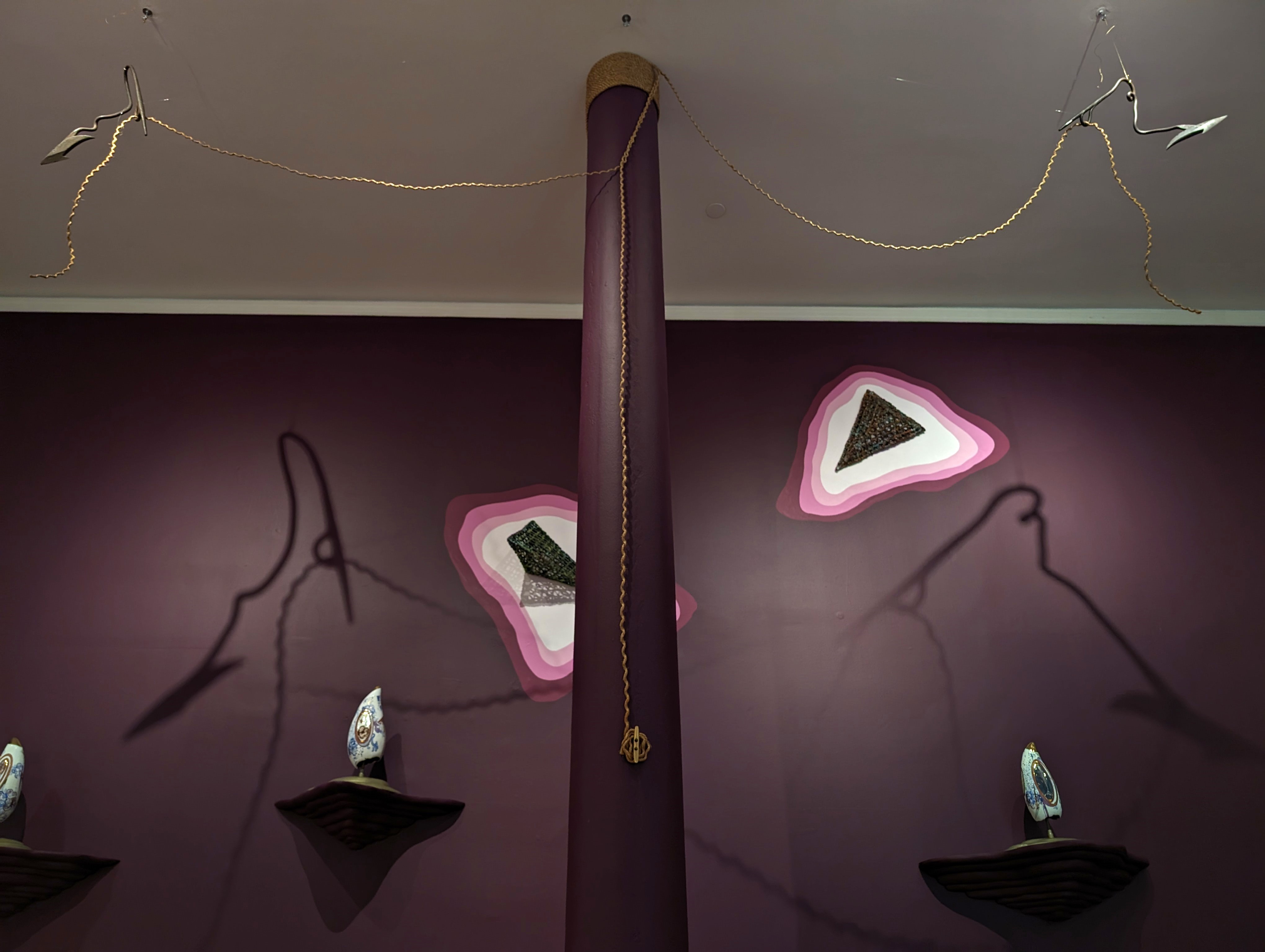
Gift of Harriett N. Davis, Mr. & Mrs. F. Gilbert Hinsdale, Elizabeth M. Hussey, 1927.19, 1959.8.85, 1942.17.13
A toggle iron from a darting gun with a tapered shank and a metal loop for the whale line. The donor notes that the harpoons were “twisted by the actions of a whale,” and used on the bark Morning Star, the schooner Caleb Eaton, and one unknown vessel.
Logbook for the Bark Callao, 1871-75 | Map of the Bay of Islands in New Zealand
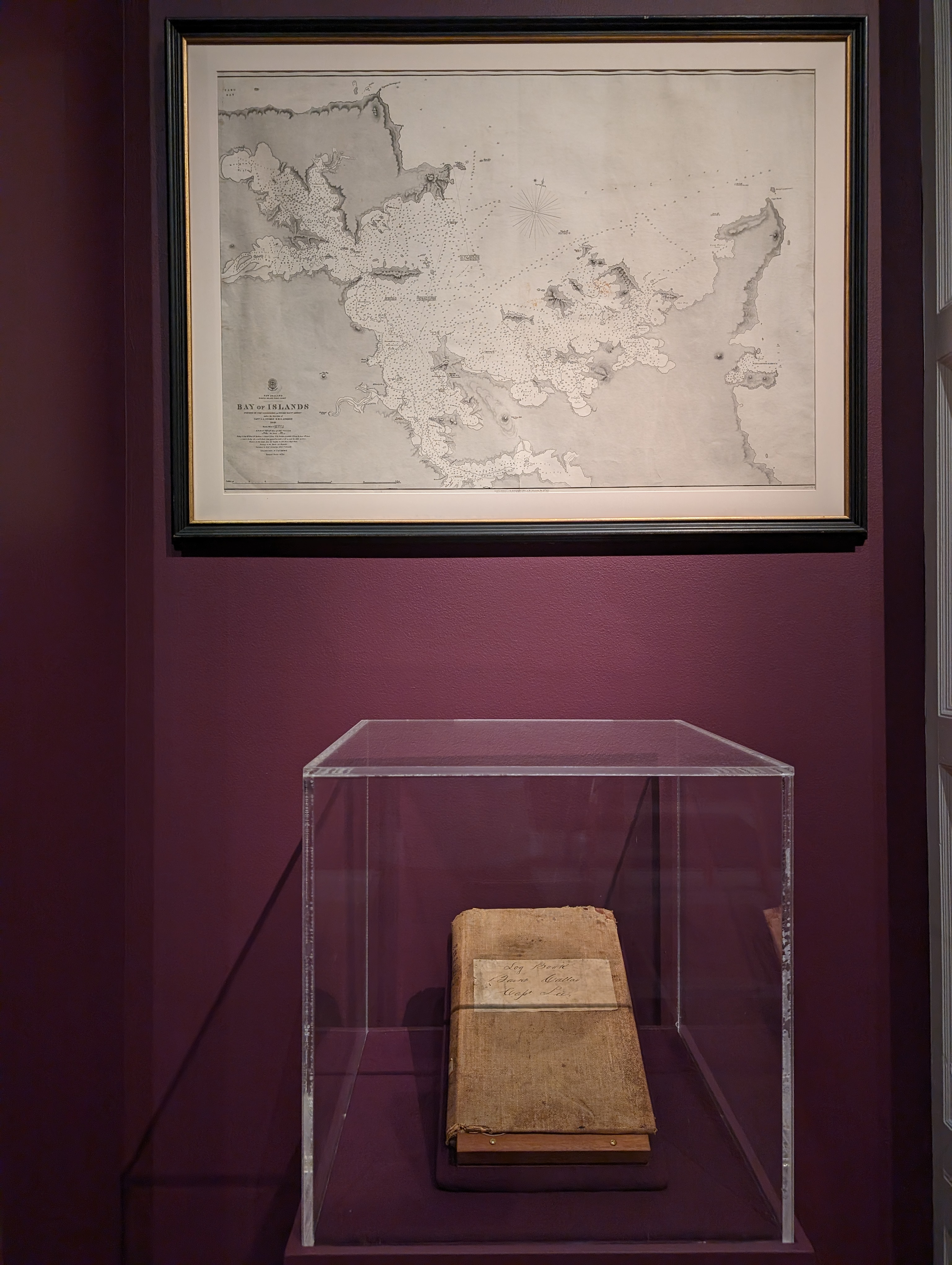
Callao (Bark) of New Bedford, Mass. mastered by Ferdinand Lee, keeper unknown, on voyage 15 July 1871 - 21 September 1875, ODHS 667
Hydrographic Office of the Admiralty, Bay of Islands, 1857. New Zealand. Gift of Patrick Sweeney, 1948.21.20.
Captain Ferdinand Lee mastered the Bark Callao from 1871-75. The whaling ship traveled from New Bedford through the Pacific with stops in Aotearoa (New Zealand) and Taonga. While at Kororāreka (Russell) in the Bay of Islands, New Zealand, second mate Andrew Kellis was discharged after an illness. Both Kellis and Lee, along with several other members of the crew, were members of the Shinnecock tribe in Long Island, New York. There is documentation for a number of whaleman, Native and non-Native who, for various reasons, left their posts on whaling vessels, and made lives in Aotearoa and other Pacific Islands.
Charles W. Morgan and the 38th Voyage
Bark Charles W. Morgan Model, Gift in Memory of Roger E. Mills & Albert E. Mills 2016.32
The Charles W. Morgan, a whaling vessel first launched in 1841, is the oldest commercial ship still afloat. In the summer of 2014, following a five-year restoration, Mystic Seaport Museum took the last remaining wooden whaleship out to sea on its’ 38th voyage. Over nearly three months, the vessel sailed to New England ports-of-call, calling attention to American maritime heritage and issues of ocean conservation. A select group of individuals were invited aboard whaleship during different legs of this journey. Leonard was one of 85 individuals from a wide-range of disciplines and backgrounds invited aboard whaleship. The select group included artists, historians, scientists, journalists, teachers, musicians, and whaling descendants. In the media clip below, Leonard shares her personal experience aboard the Morgan and the connections she discovered between ropework on a ship and her clay work as a ceramicist; revealing how “holding the line” can carry multiple meanings in her life and work.
Wallpaper
This wallpaper features graphics and objects from the New Bedford Whaling Museum collection, including illustrations of whales from Delft tiles made in the late 1700s, toggle harpoons, and rope. The color palette in the design and throughout the galleries was inspired by the color in local sea moss, a logbook from the Bark Callao, and Delft manganese tiles.
Design by Courtney M. Leonard
